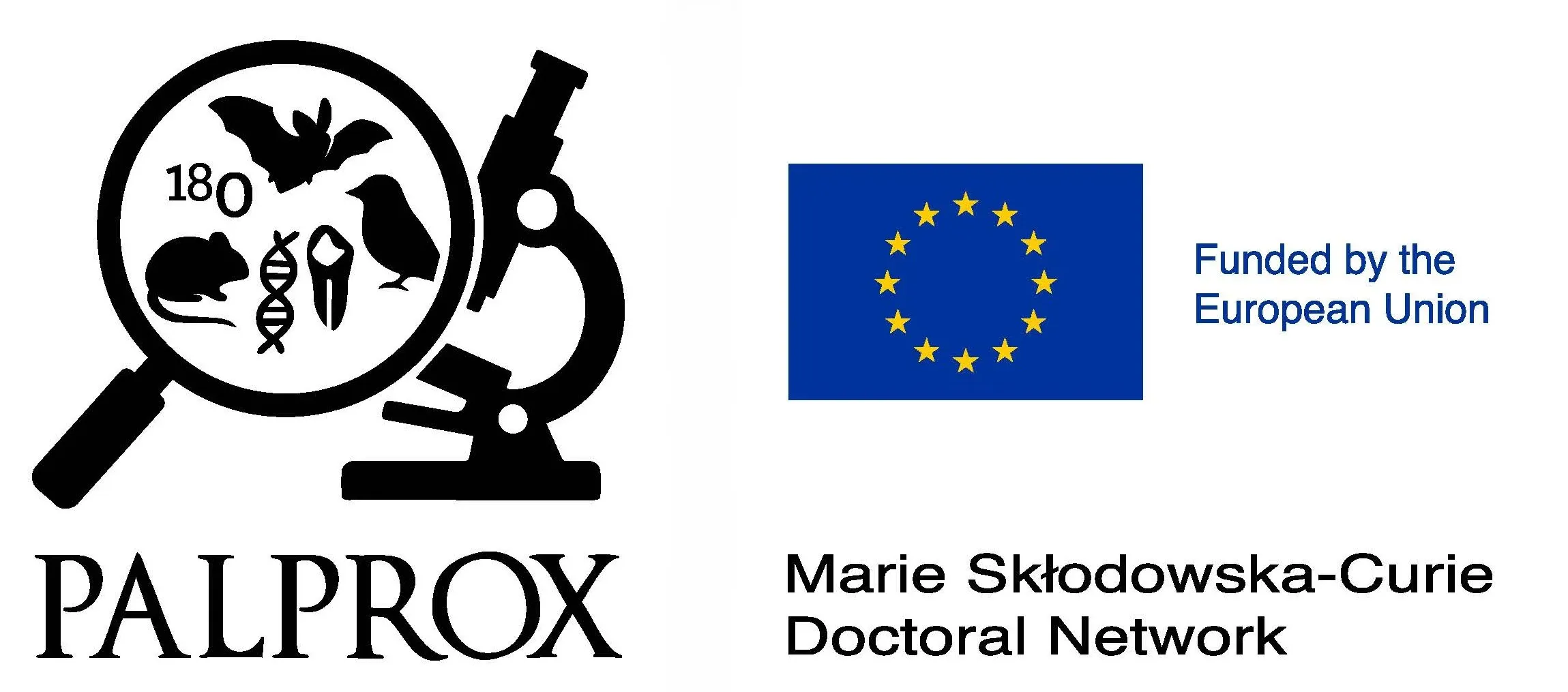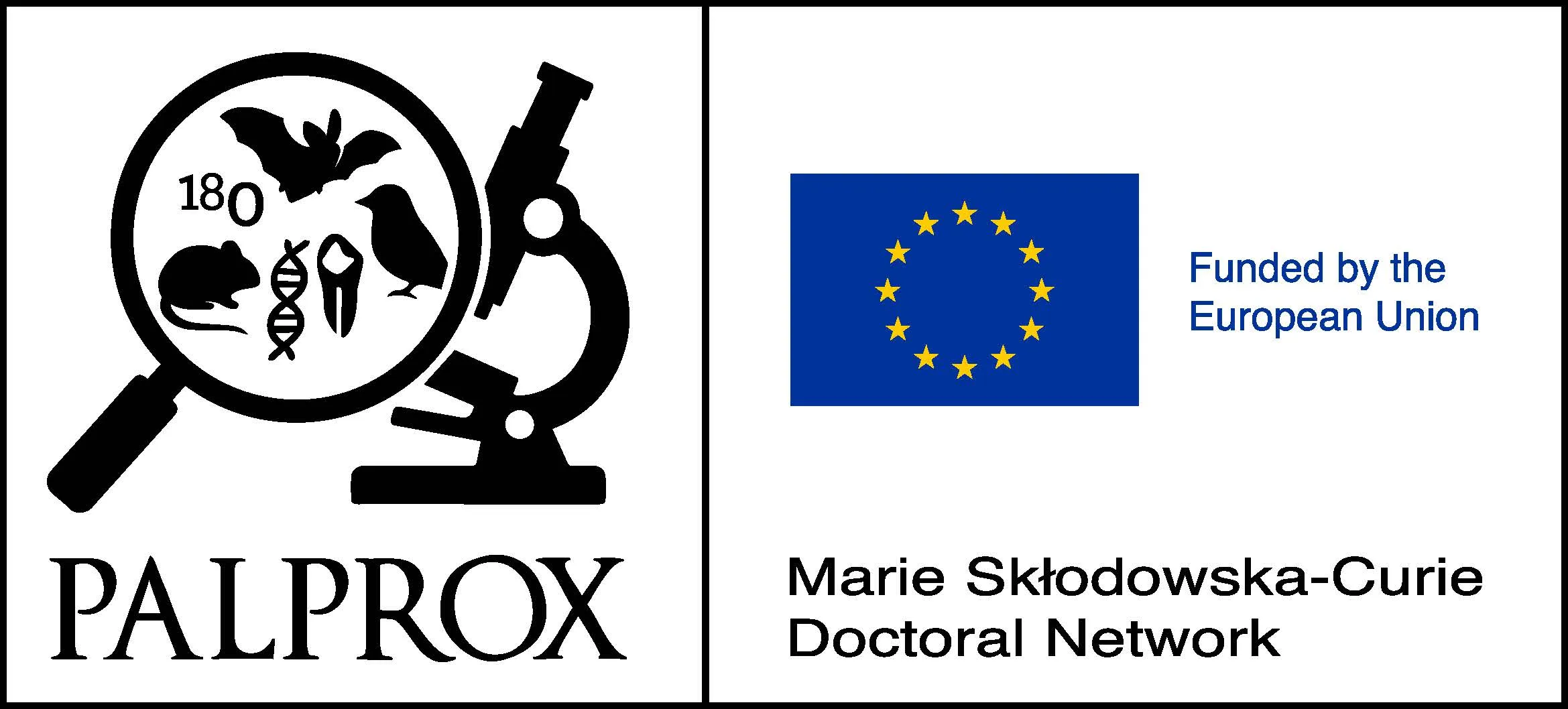
Palprox objectives
The primary goal of the Doctoral Network PALPROX is to train a group of 9 Doctoral Candidates using small vertebrates as a proxy applied to Prehistoric Archaeology studies. Each one will follow her/his doctoral training and professional development from the Network, being enrolled according to the rules of an official Doctoral Program of one beneficiary and involved in practising crossed interdisciplinary methodologies through his/her Individual Research Project.
Methodological Framework of PALPROX
Therefore, Doctoral Candidates will incorporate crossed methodologies to the study of three types of small vertebrates (bats, corvids and small mammals), in synergy with other disciplines, such as the use of Geometric Morphometrics, Oxygen Isotopes, Geographic Information Systems, Ecological Niche Modelling and the application of ancient and modern DNA as a chronological tool.
All this without forgetting that these methodologies cannot replace the fundamental methods of Taxonomy (the morphological and morphometric description of the taxa) and Taphonomy (the processes by which these small vertebrates have been accumulated in the archaeological sites).
Scientific Structure and Research Approach of PALPROX
PALPROX has five complementary scientific work packages designed so that, regardless of the specific topic of each doctoral thesis, all candidates will acquire the needed general knowledge in the basic foundations of the small vertebrate studies, as well as in the use of different methods (both traditional, as well as new techniques) for the analysis of the obtained results.
It integrates a wide range of methods and disciplines to address common research questions about the impact of Late Pleistocene climate changes on the distribution, evolution and adaptation of small vertebrate species.
PALPROX fosters cross-disciplinary further collaborations with other fields to address common research questions and challenges with potential applications in the present times by using Quaternary data in conservation biology, and current climate change concerns.
Core Scientific Questions and Objectives
Three questions guiding our understanding of adaptation and climate change

What are the main mechanisms of morphological and ecological adaptation of the small vertebrates studied species in response to environmental changes?
To integrate the study of morphological and ecological adaptations observed through advanced techniques such as micro-CT, 3D GM, geochemical analyses and environmental reconstruction techniques.

How have the climatic changes of the Late Pleistocene influenced the distribution, evolution and adaptation of that species concerning Human Palaeoecology?
To investigate the impact of climate change on the morphology, distribution and ecological adaptations of various species of small mammals, chiropterans, and corvids as a reflection of Human Palaeoecology in three European biogeographic regions during the Late Pleistocene.

What are the main mechanisms of morphological and ecological adaptation of the small vertebrates studied species in response to environmental changes?
To treat with the study of population dynamics and migration patterns, using aDNA methods for chronological inferences, Ecological Niche Modelling and Remote Sensing Data; integrate fossil and modern data to develop predictive models and elaborating on the responses of the studied species to biodiversity loss and climate change concerns.
Well-Documented Archaeological Sites Across Europe
The archaeological sites that Doctoral Candidates will use as a part of his/her Individual Research Project are well dated and excavated sites in different European biogeographic regions, Atlantic, Mediterranean and Continental with suitable and available data sets to achieve the objectives of this Doctoral Network.

